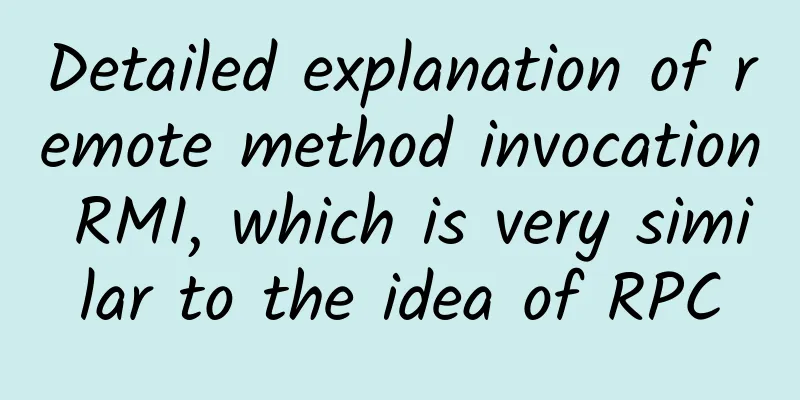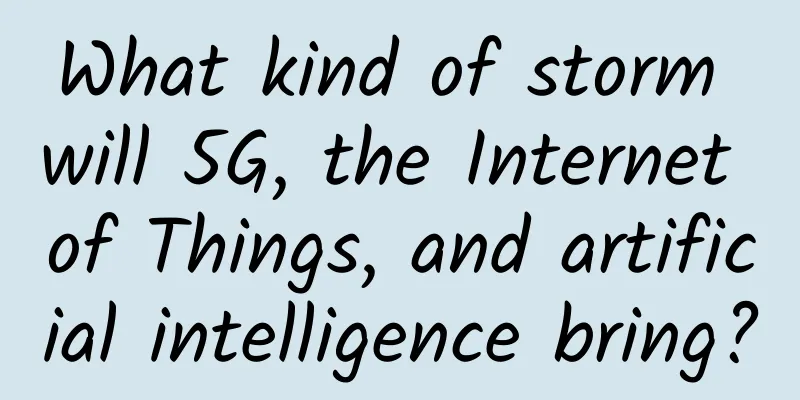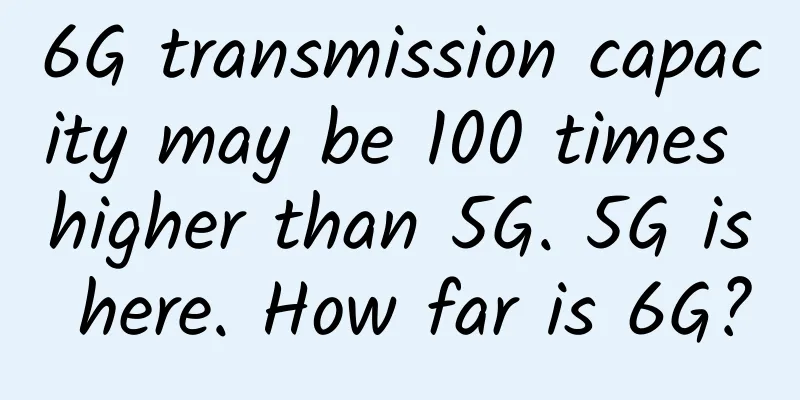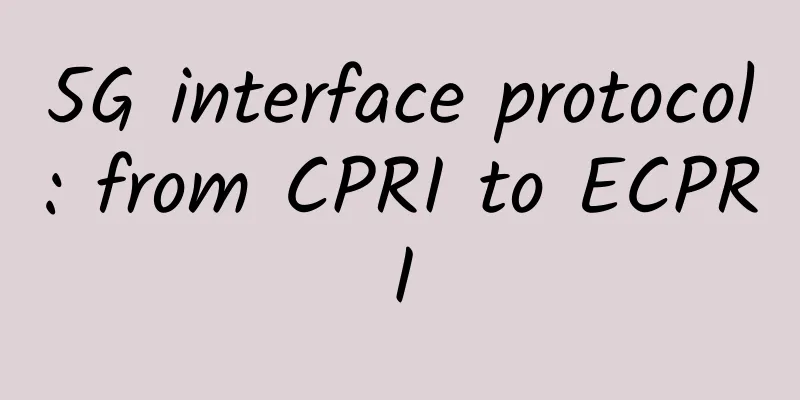Detailed explanation of remote method invocation RMI, which is very similar to the idea of RPC

|
Definition of RMI RPC (Remote Procedure Call): Remote method call is used by one process to call a procedure in another process, thus providing the distribution capability of the process. RMI (Remote Method Invocation): Remote method invocation is a step forward on the basis of RPC, providing communication between distributed objects. It allows objects running in one Java virtual machine to call methods of objects running in another Java virtual machine. These two virtual machines can be running in different processes on the same computer or in different computers on the network. The full name of RMI is to simplify the calling of remote interface objects as much as possible. RMI greatly enhances Java's ability to develop distributed applications. For example, programs with complex calculation methods can be placed on other servers. The main server only needs to call them, and the actual calculations are performed on other servers. Finally, the calculation results are returned to the main server, which reduces the burden on the main server and improves efficiency (but there are also other overheads). RMI Network Model At the initial design stage, what we really wanted was a mechanism where client programmers could make method calls in a regular way without having to worry about sending data to the network or parsing responses. So we have the following network model: install a proxy for the remote object on the client. The proxy is an object located in the client virtual machine that appears to the client program as the remote object to be accessed. When the client calls this proxy, it only needs to make a regular method call. The client proxy is responsible for using the network protocol to contact the server. Now the question is how do agents communicate with each other? There are usually three ways: 1. CORBA: Through the object request broker architecture, it supports method calls between objects written in any programming language. 2. SOAP 3. RMI: JAVA's remote method invocation technology, which supports method invocations between Java distributed objects. CORBA and SOAP are completely language independent and can be written in C, C++, and JAVA, while RMI is only applicable to JAVA. How RMI works 1. Terminology 1. Stub: When a client calls a method of a remote object, it actually calls a normal method on the proxy object, which we call a stub. The stub is located on the client machine, not on the server. 2. Parameter marshalling: The stub will pack the parameters required by the remote method into a group of bytes. The process of encoding parameters is called parameter marshalling. The purpose of parameter marshalling is to convert the parameters into a format suitable for transmission between virtual machines. In the RMI protocol, objects are encoded using a serialization mechanism. 2. Programming Model To introduce the RMI programming model, I will write a demo below. The remote object represents a warehouse, and the client program asks the warehouse for the price of a product. 1. Interface definition The capabilities of a remote object are expressed by an interface that is shared between the client and the server: The interface of the remote object must extend the Remote interface, which is located in the java.rmi package. All methods in the interface must declare that they throw RemoteException. This is because remote methods always have the possibility of failure, so the Java programming language requires that each remote method call must capture RemoteException and specify the corresponding processing operations that should be performed when the call is unsuccessful. 2. Interface implementation You can tell that this class is the target of a remote method call because it extends UnicastRemoteObject, whose constructor makes its objects accessible remotely. 3. RMI Registry: Publishing RMI Services via JNDI
For example: rmi://regserver.mycompany.cmo:99/central_warehouse If we publish the RMI service locally, the host is "localhost". In addition, the default port number of RMI is "1099". Of course, we can set it ourselves as long as it does not overlap with other ports. Service is actually a unique service name based on the same host and port. Publish the RMI service: Running results:
4. Calling RMI service Running results:
5. Let's take a look at the network diagram of RMI:
Limitations of RMI
|
<<: Actual measurement: The truth about 5G high-speed downloading: monopoly, speed limit and lies
>>: In the 5G era, will WiFi be eliminated or become more powerful?
Recommend
Choosing a PoE Standard for Your Design: PoE, PoE+, and PoE++
Power over Ethernet standards have important diff...
How 5G will impact IoT technology
According to many predictions, the Internet of Th...
What will 5G rely on to disrupt data centers?
In a January 2017 survey, research firm IHS Marki...
IEEE: Artificial intelligence, 5G, and the Internet of Things will be important technologies in 2021
On November 26, foreign media reported that accor...
IBM releases 'quantum-safe' tool with end-to-end encryption to protect against quantum computing attacks
On May 15 , IBM launched a set of tools called &q...
5G development is timely and network construction should be moderately advanced
At present, the overall development of 5G in the ...
ReliableSite: 1Gbps unlimited dedicated server in New York/Miami/Los Angeles starting from $29/month
ReliableSite is a business that specializes in pr...
What exactly is the “network manager” that communications people talk about every day?
[[440862]] When it comes to "network adminis...
The Industrial Internet of Things is coming in full force. Wind River shows you how to keep the industrial control system “on track”
[51CTO.com original article] "Stable and rel...
The Three Realms of Industrial Internet
The Industrial Internet platform is now very popu...
Finally someone explained the role of OSI and TCP clearly
I have mentioned the OSI reference model and the ...
Friendhosting Halloween 30% off, 13 data center VPS monthly payment from 2.1 euros
Friendhosting has launched this year's Hallow...
Huawei Cloud launches full-stack private cloud solution to support enterprise cloud transformation
[51CTO.com original article] Recently, the Huawei...
The ICO bubble has been punctured and blockchain development will return to the right track
The final implementation of the regulation has sh...
CloudServer: $12/quarter-single core, 4G memory, 30G NVMe disk, 5TB/10Gbps New York data center
CloudServer is a foreign hosting company founded ...









